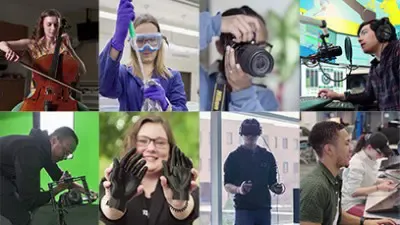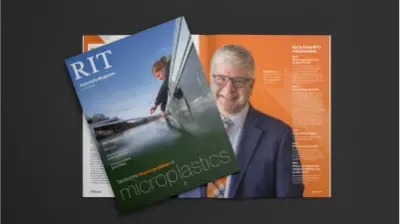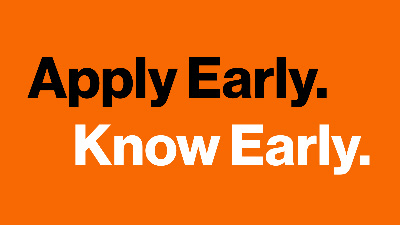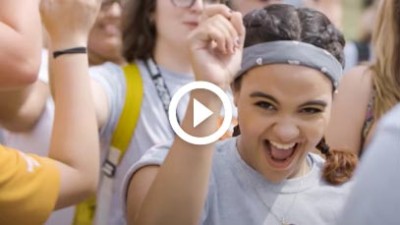Print and Graphic Media Technology Bachelor of Science Degree
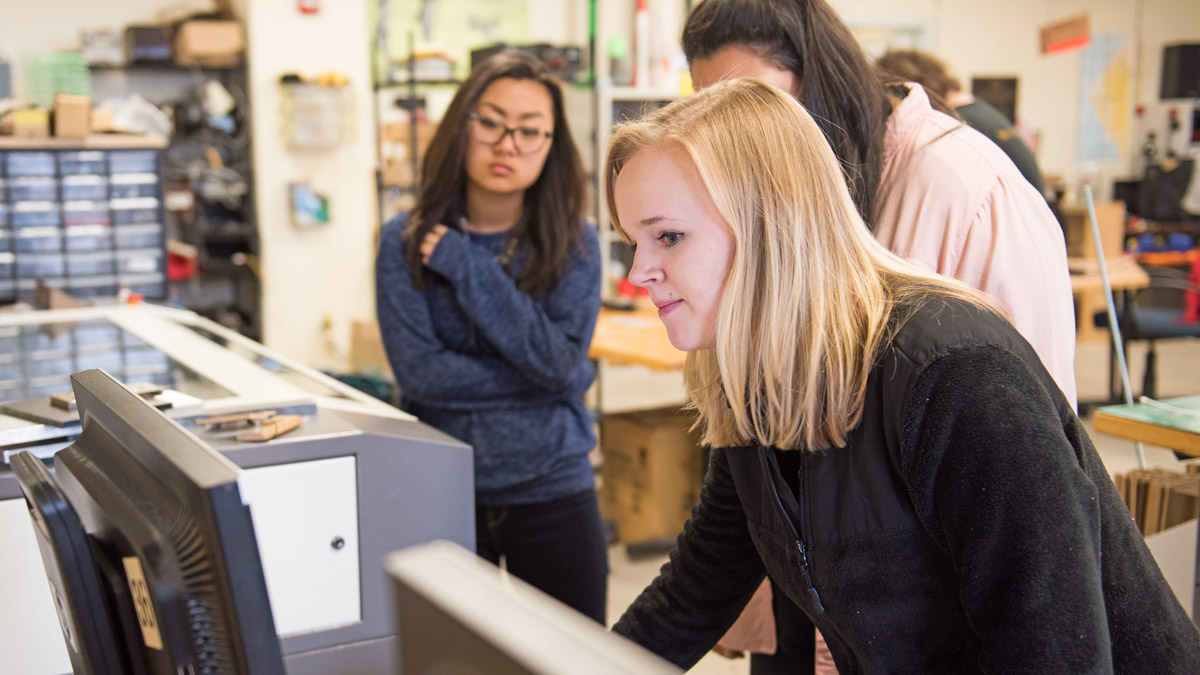
Print and Graphic Media Technology
Bachelor of Science Degree
- RIT /
- Rochester Institute of Technology /
- Academics /
- Print and Graphic Media Technology BS
Design impactful marketing and packaging materials with RIT’s graphic communication degree.
Overview for Print and Graphic Media Technology BS
This program is no longer accepting new student applications.
Students interested in this subject are encouraged to consider the BS program in packaging science.
Print is among the world’s largest manufacturing industries, and while there’s no doubt that the printing industry is evolving, tremendous career opportunities have emerged as part of this transition. While newspapers and magazines have scaled back their print editions, print and digital communications have soared in a range of other applications. Today, the demand for professionals with unique knowledge of the industry has never been higher. Opportunities for exciting careers abound for individuals with a command of the principles of graphic media processes and applications.
For example, on every store shelf, products are displayed in dynamic and innovative packaging. Point-of-sale displays are designed to engage and entice consumers. Brand owners continually look to print providers to maintain and enhance their brand image through varied media. Marketing materials–from postcards, brochures, and print ads to digital banners, social media, and websites–are all designed to encourage engagement and interaction. And none of these printed and digital collateral materials can be produced without the skills of professionals in the print and graphic media industry.
Today’s graphics are custom manufactured by companies who seek the next generation of leaders with the knowledge and unique skillsets required for consistent, high quality printed and collateral materials. What was traditionally viewed as a paper-based enterprise, the print industry has now evolved to include the management, application, and use of dynamic print, graphic media, and digital assets in advertising, public relations, marketing, social media, packaging, printed electronics, and more. It’s a vibrant industry that is perfect for those who are interested in a career that combines applied technology with creative flair.
RIT’s Print and Graphic Media Technology Undergraduate Degree
RIT’s print and graphic media technology undergraduate degree prepares you to become a print and graphic media leader who can bring graphic projects to life.
What’s the difference between a graphic designer and a print and graphic media specialist?
A graphic designer is charged with creating visually appealing designs that convey marketing messages or product information based on its purpose and audience. A box of granola bars, for example, needs to stand out on a store shelf amid a sea of other products while also communicating the product’s health benefits. The graphic designer focuses their efforts on branding, typography, layout, and the overall principles of design to create a visually appealing package for the granola bars. While the design file may capture the intent and message from the brand owner, it is not ready for production and must be prepared for output. This is where the print and graphic media specialist begins their work.
The print and graphic media specialist prepares the design file for output. That output can be a three-dimensional printed piece (product packaging, posters, brochures, direct mail, personalized printed materials), or it can be a digital asset (digital banner ads, websites, social media posts, multimedia projects). For the box of granola bars, print and graphic media specialists prepare the design files for printing and converting, manage the color and printing process(es), make suggestions for paper selections for printing, coordinate manufacturing logistics, use and manage specialized software and hardware, and more. As graphic media specialists advance into leadership positions, they will oversee all aspects of graphics manufacturing, including management of employees, processes, and projects; inform business and financial performance; and lead the overall organization.
What does a print and graphic media professional do?
- Pre-media Preparation: Pre-media preparation involves optimizing a design file for industrial-scale manufacturing. This includes type and font management, confirming image size and resolution to ensure sharp images, and ensuring accuracy and consistency of color output.
- Production Workflow: Once the graphics are prepared for output, the production processes require oversight and management of each step of the workflow: from pre-media to output and post-press processes such as cutting, bindery, and finishing to on-time, on-budget delivery. Production workflow is the heart of the graphic manufacturing operation.
- Color Management: Engaging projects use color to catch the eye, emphasize messaging, and make a printed piece more interesting. Color management ensures that the colors selected are vibrant, powerful, and meet the brand owner’s intention. This is achieved by managing color systems and reproduction technologies.
- Package Printing: Products can be packaged in a vast array of ways, and graphic media professionals know how to optimize and execute the reproduction of packaging graphics for products such as boxes, bags, labels, cans, bottles, and other packaging materials. Quality and consistency are foremost concerns for consumer packaging companies in this growth market.
- Managing and Distributing Digital Assets: Digital assets range from photos, videos, animations, text, and more. Print and graphic media professionals use digital asset management systems that organize, manage, store, and distribute these assets.
- Graphic Media Vendors: The industry is supported by a diverse array of vendors, from hardware to software to consumables, career opportunities abound in management, marketing, technical, and sales roles.
RIT’s print and graphic media technology degree prepares you to:
- Develop a breadth of cross-channel graphic media production skills.
- Apply expertise in computer graphics, color management, imaging, and business practices that will enable you to manage a range of multimedia projects.
- Build capabilities in publishing, database management, new media production, networking, and mobile communications.
- Produce and manage content across multiple types of traditional and digital media.
- Lead in a range of industries that rely on graphic communications.
Furthering Your Career in Print and Graphic Communication
Today’s careers require advanced degrees grounded in real-world experience. RIT’s Combined Accelerated Bachelor’s/Master’s Degrees enable you to earn both a bachelor’s and a master’s degree in as little as five years of study, all while gaining the valuable hands-on experience that comes from co-ops, internships, research, study abroad, and more.
- Print and Media Graphic Technology BS/Packaging Science MS: Packaging is currently the largest growth area in the printing industry. As such, RIT offers this unique accelerated dual-degree to better prepare you for a successful career in the package printing industry. As a growth segment, the packaging industry offers tremendous opportunities for professionals with knowledge of both the graphic reproduction and the physical structures of packaging. Students with a dual degree in graphic media technology and packaging science are uniquely prepared for leadership opportunities and successful career trajectories in this high-demand field.
- +1 MBA: Students who enroll in the print and graphic media technology BS degree also have the opportunity to enroll in the +1 MBA program. In as few as five years, students can earn a BS degree and an MBA, enabling them to apply their knowledge in a range of graphic media business leadership positions.
Curriculum for Print and Graphic Media Technology BS
Current Students: See Curriculum Requirements
Resources
Access Resources for students including academic advisors, student clubs and organizations, documents, technical information and support, and software help.
